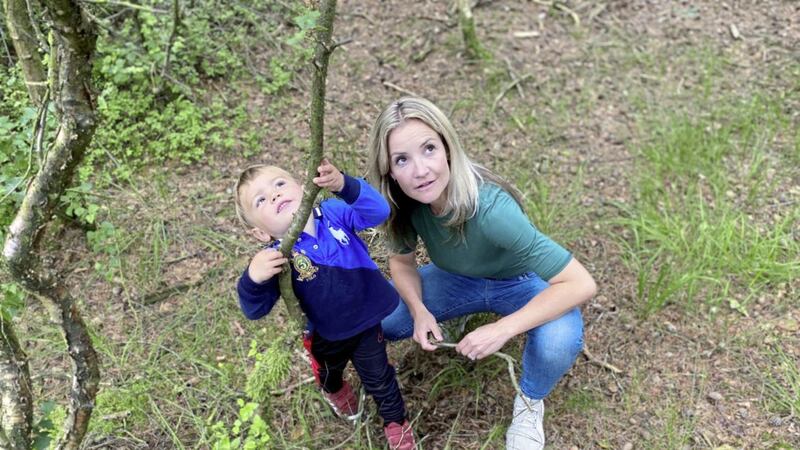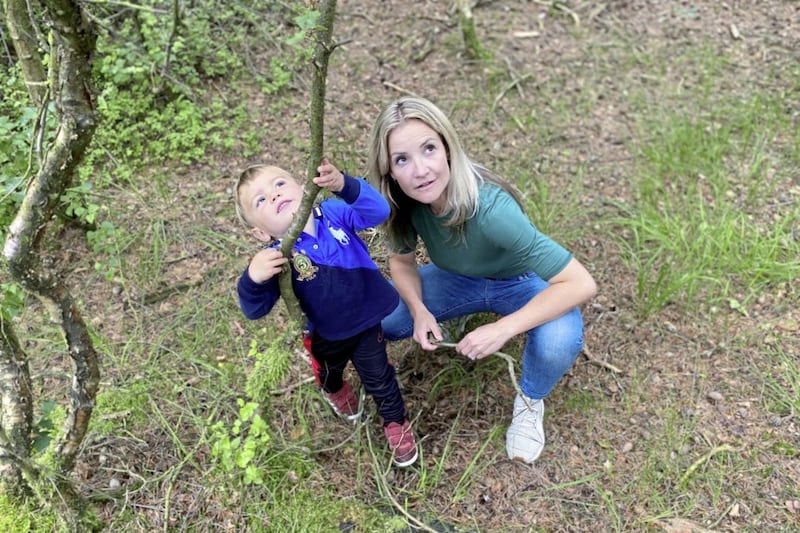AFTER months out of school during lockdown, children and their weary parents are now faced with yet more time to fill during the holidays.
To help inspire them, The Wild Network has teamed up with TV presenter Helen Skelton and Smart Energy GB to suggest 42 sustainable things to do over the summer.
“I’ve got two young boys, who have been home pretty much the whole time during lockdown,” says Skelton of her sons, Ernie, aged five, and Louis, who's three. “They’re wide awake at 6am and full of energy all day.”
The Countryfile presenter and former Blue Peter host continues: “The boys love being outside – whether that’s in the garden, local park or woodland. They love foraging, climbing trees and creating seed bombs. If they’re running around all day, I’m hoping they’ll sleep all night!”
In addition, the Royal Horticultural Society (RHS) has also compiled a series of activities for children to enjoy over the summer, and Guy Barter, RHS chief horticultural advisor, says: “Getting outside and sparking excitement around plants and bugs is the best way to inspire a love of nature, which is hugely beneficial to children’s health and wellbeing.
“Being outdoors makes us feel free, and gardening and connecting with nature is a very mindful task that can be just as rewarding for parents as it is for children.”
Here are 10 outdoor activity suggestions from the RHS and The Wild Network…
1. Make a seed bomb
The Wild Network suggests children will have fun mixing daisy seeds with peat-free compost and water, and rolling the mixture into a ball. Let the balls dry and throw the resulting ‘seed bombs’ into the garden, or perhaps the park. Make sure you know where the bomb landed, so you’ll be able to see if daisies grow there in the spring.
2. Create a temporary dam
If you live near a stream, The Wild Network suggests making your own temporary dam with twigs, branches and stones to stop the flow of water. But it’s important to remove the dam straight afterwards, or the stream could flood.
3. Go foraging for blackberries
Blackberries are in abundance at this time of year, says the RHS, growing wild in hedgerows from now until October. Take a bag on a country walk and hunt for the darker, sweeter, fruits to bring home. Avoid picking any that are below adult waist level or near busy roads.
4. Collect seeds to plant next spring
Cowslips, primroses, garden primula and other early flowers will be ready to shed seed now, says the RHS. With permission, gather seeds by snipping off seed heads and shaking them over a sheet of paper. Sprinkle the seeds onto a pot or tray filled with firmed potting compost, water, and leave in a sheltered spot, covered so animals can’t disturb them. Next spring look for little seedlings to plant in the garden.
5. Paint a watercolour with rain
If it looks like it’s about to rain, The Wild Network suggests kids put some sheets of paper outside with drops of watercolour paint on them, and wait and see what picture the rain paints! “Even if it’s raining the boys enjoy being outside, playing in puddles, or creating a painting using drops of watercolour paint and the rain,” says Skelton. “For me, rain doesn’t have to necessarily mean the end of outside play.”
6. Create bug hotels for pollinators
Fill wooden boxes, flowerpots or other containers with pine cones, bamboo canes, straw, bark and logs or wood with holes drilled in them, suggests the RHS. Bees in particular like these ‘hotels’, especially the solitary bees that are among the best flower pollinators. Watch and make a note of which visitors come to stay.
7. Go on a rainbow scavenger hunt
Both the RHS and The Wild Network suggest that in the garden or on a walk, children should try finding something in nature from every colour of the rainbow, and take photos if possible. The RHS warns children to be respectful to nature by only taking very small samples from plants or by looking for fallen materials, and not to touch anything unusual. The RHS Summer Flower Spotter Guide might help.
8. Make a mini-pond
Sink an old washing up bowl into the ground, fill with water, and add a rock or brick so anything that falls in can crawl out, says the RHS. Put in some waterweed and wait for creatures such as water boatmen and pond skaters to appear. Leave a muddy patch next to the pond so you can see any bird, fox or hedgehog footprints. Birds and insects also need mud for nesting.
9. Be a street artist
Paint some stones, suggests The Wild Network. There are lots of possibilities – children might want to paint on flower patterns, turn the stones into insects or animals or decorate them with patterns. Hiding them for your friends to find could be fun too.
10. Watch caterpillars transform into butterflies
Moths and butterflies lay eggs in late summer that soon hatch into caterpillars, points out the RHS, which says nasturtiums are particularly attractive to large cabbage white butterflies. Although gardeners aren’t pleased when these butterflies infest cabbages, children can raise the caterpillars in a plastic box with a lid that lets in air, feeding them on cabbage leaves until they form a chrysalis. Inside the chrysalis, the caterpillar turns into a butterfly, in a process called metamorphosis.
:: Visit The Wild Network (thewildnetwork.com/inspiration/2020/7/20/42-days-of-summer) to find the 42 Days of Summer checklist.





